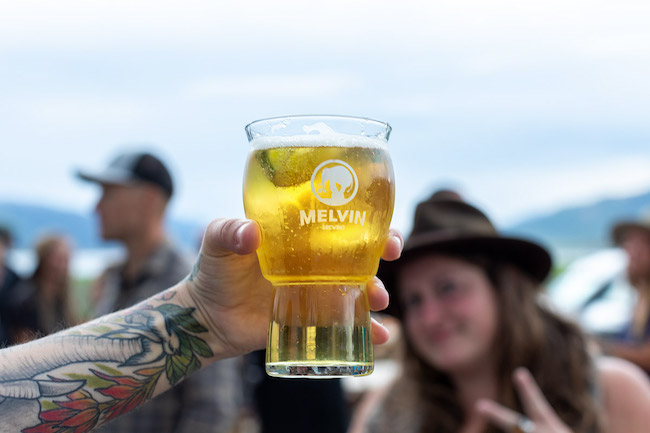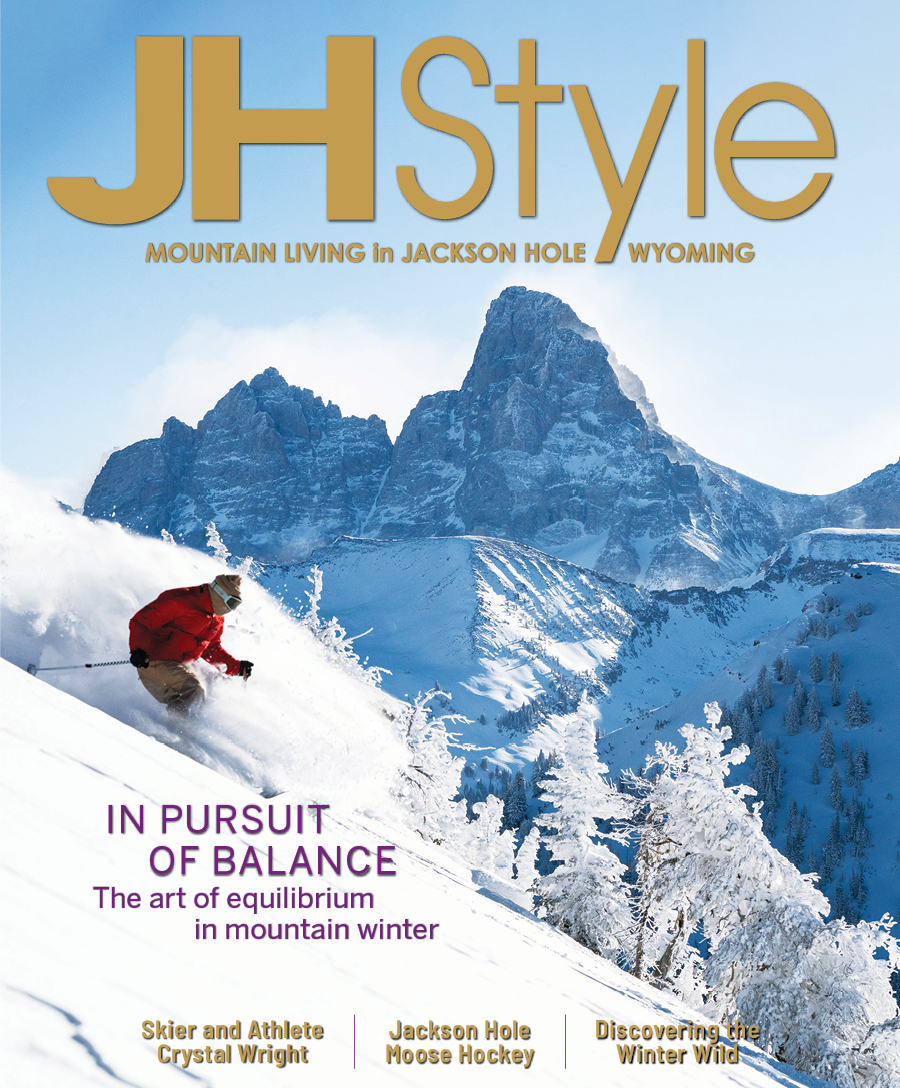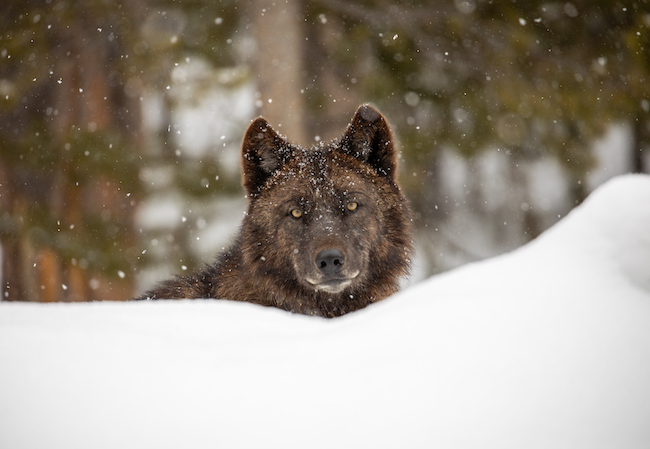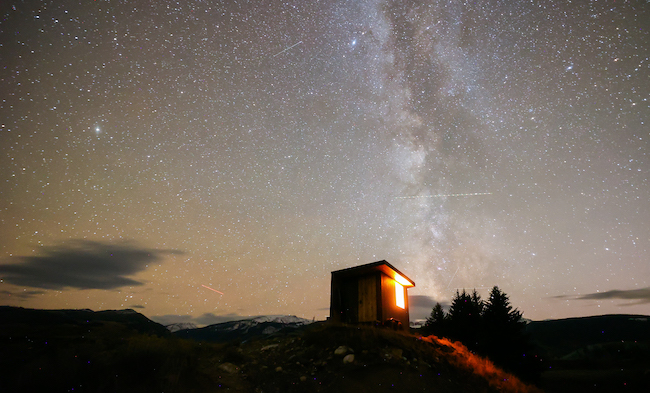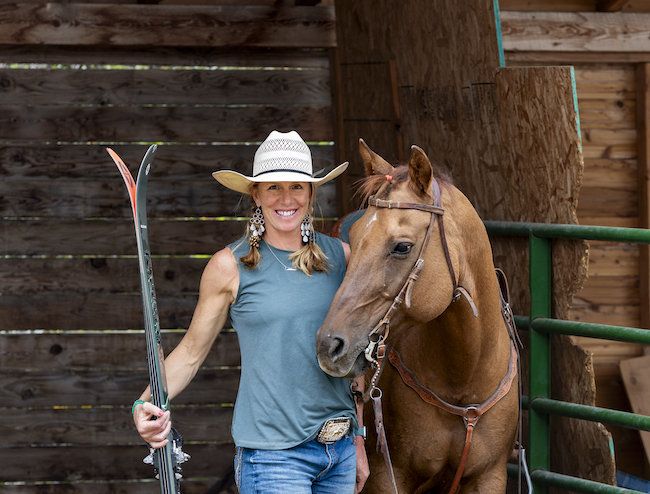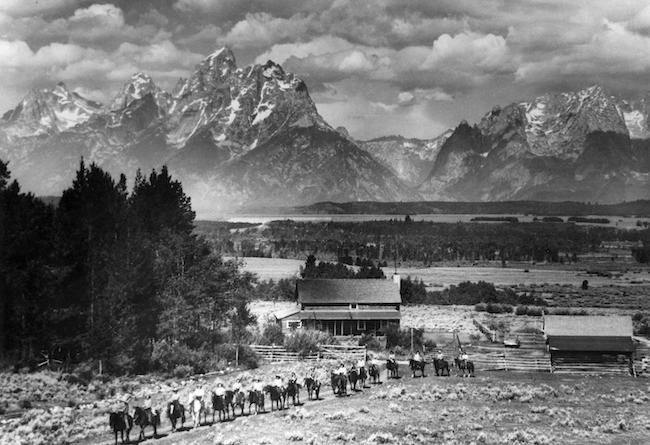Horse Power
04 Jun 2025
An icon at the heart of the American West
Summer/Fall 2025
Written By: Priscilla Marden | Images: Mark Gocke/Priscilla Marden
Sunlight slides across the copper sheen of muscles. Sharp, pointed ears flick up, nearly touching together as intense, clear eyes scan the horizon. A quick, whistling breath pierces the quiet of the morning. The world of the horse is in full focus, present, filled with possibility. Proud, powerful and majestic, horses reside in fabled stature within our collective psyche.
Without the horse, the “Mythic West” wouldn’t be. Used by wagon trains, the Pony Express, farmers for agriculture, ranchers for managing livestock, and the transportation of explorers and settlers, the horse has been the ways and means of developing the myths and realities of the western United States.
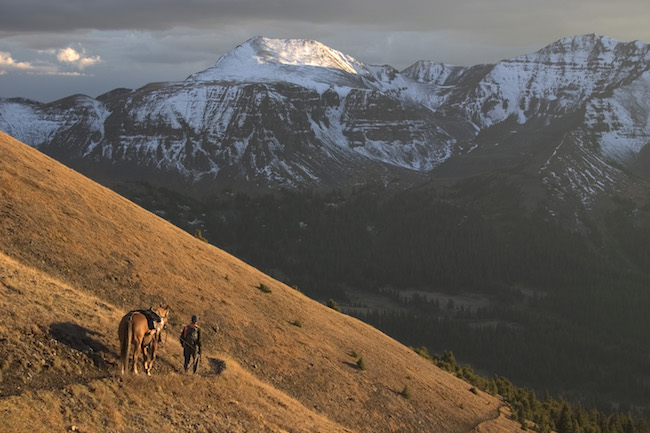
A Legendary Past
The horse is inseparable from the history of the West, playing an integral role in the expansion of settler colonies across the continent. Although they are believed to have been in the Americas 40 million years ago , migration took them across the Bering Strait to Mongolia and into Europe. It was not until the 1400s that horses were again brought to the continent by Spanish explorers where their herds thrived on the open grasslands.
The arrival of the horse was a boon to the Indigenous cultures in North America. By the 1700s horses were prized possessions of virtually every tribe: hauling belongings, carrying warriors into battle, swiftly bearing hunters through the great herds of bison, and transporting families from camp to camp.
In the early days of Jackson Hole, horses were primarily a means of transportation. Pulling sleighs and wagons, running beaver slides for haying, delivering mail, rounding up cattle, hunting game, and simple travel to school or to neighbors made them essential for nearly every family.
With the advent of dude ranching in 1908, horses became part of a tourist’s Wyoming experience. Backcountry exploration continues today at the valley’s remaining dude ranch operations, providing rare opportunities to view wildlife from the back of a sturdy 4-legged partner.
Wild at Heart
Although many horses in the modern West are quarter horses, fondly referred to as “America’s Horse,” the horses of yesterday rarely came with registration papers. Horses were gathered, traded, bred in the pastures of ranchers and farmers, and came with diverse genetics. A large portion of them ran free before they were acquired by humans.
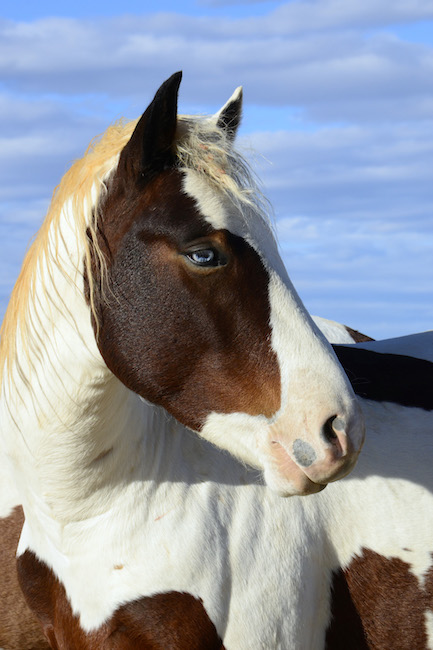
Wild horses, often broadly called “mustangs,” still roam freely in Wyoming. Majestic stallions with their shoulder length manes twirled in dreadlocks, proudly lord over their multicolored bands of mares and foals. Posturing and squealing through battles with rival herds, their battle scars are a record of their years of survival in the harshness of open range life. Controversy reigns over the policies of rounding up and auctioning them off, vs letting them remain on public lands. For anyone wanting to view them in their natural habitat, herds around Rock Spring, Lander, Lovell and on the Wind River Reservation are some of the easiest to spot. Adoption programs have relocated thousands of these mustangs to the public, many of whom have become ambassadors for wild horse preservation.
The Modern Equine
One of the fastest growing sectors in the contemporary equine industry is the horse’s role in promoting wellness. From therapeutic riding programs to horse-facilitated mental health, to corporate leadership training and serving returning veterans, horse programs utilize the many esoteric gifts of horse/human interactions. Because a horse’s inherent survival wiring requires it to be attentive and aware of all the nuances in its environment, horses can model the skill of being fully present in any moment.
On a warm summer day a group of women gathers outside a corral for a cancer survivorship class. They are getting ready to go in to meet the loose horses and choose who they want to work with that day. It is intimidating. The horses are big and sometimes overly friendly.
One woman struggles with losing the mobility in one arm from her treatments, and she is nervous because of her bone fragility. A little palomino comes right up to the cautious woman and parks himself in front of her. He stands quietly and reaches his nose out to her, softly breathing in her scent and drops his head. He doesn’t move away but he blocks all the other horses from coming over. He has chosen to be her support horse and spends the day softly at her side. On other days, he is a spunky, bossy character, but for her he adopts a quiet and protective demeanor. Together, they explore the dynamics of human/horse interaction, and as their relationship progresses, they create a non-verbal bond that honors their depth of connection.
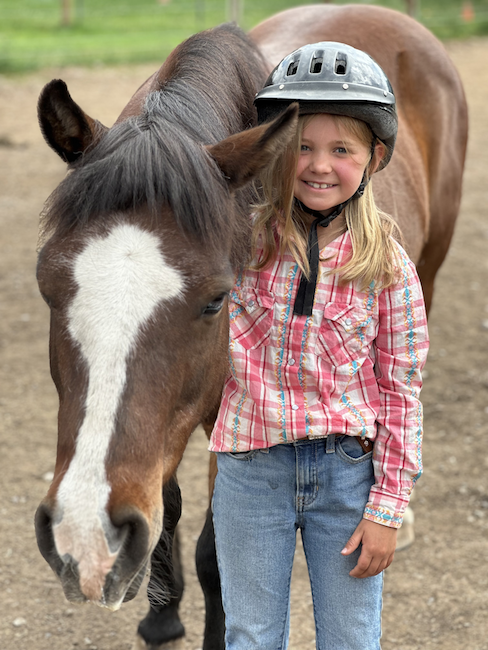
Ask nearly any 8-year-old girl what she loves about horses and she will show you in a matter of minutes how horses can immediately connect. They are literally full of heart. Their heart rhythms help calm people just by being in their presence. Research by the HeartMath Institute has shown that horse hearts and human hearts can synchronize and help promote feelings of positive connection. Many people say they “just feel comfortable being around horses.”
Rodeo & Beyond
It’s Saturday night in July in Jackson Hole. The stands at the fairgrounds are filled with eager spectators, their footsteps rattling the bleachers as they wind their way to their seats. As the first strains of the National Anthem fill the air, the steel gates clang open and a horse bursts into the arena, mane and tail streaming as he thunders past the grandstand, sand flying up from his churning hooves. His rider, in her cowboy hat, matching chaps and queen sash, holds fast to the American flag billowing out behind them, stars and stripes illuminated by the floodlights as the crowd bursts into explosive cheers. It’s rodeo time again!
A favorite entertainment for valley visitors, rodeo events highlight the skills needed to interact with working horses. From “getting the bucks out” of an un-started horse to praising the speed and accuracy of a good rope horse and rider team, to the flash and dash of an agile barrel racer, today’s rodeo events highlight practical ways horses remain essential for ranching operations. A well-trained horse makes the job of a cowboy a lot easier: moving cattle, roping and doctoring, getting to places where motorized vehicles can’t go, working hard in every kind of weather.
Horses are an essential part of Jackson Hole’s history and culture, and any visit to the valley is bound to include them. Whether a trail ride is on your itinerary, an evening at the rodeo, or simply the tranquil joy of watching a herd grazing at sunset, these compelling and inspiring creatures endure at the heart of our Western past, present, and future.

The Art of the Equine
Horses have been a focal point for artists and sculptors for thousands of years. Their influence and prevalence as artistic subject matter is evident today in many of Jackson Hole’s art galleries. From traditional representation to contemporary interpretation, horses have a wide appeal for collectors and art enthusiasts.
Taryn Boals is a local artist renowned for her unique interpretation of horses. Working in mixed media, she brings etheric images of the many connections horses have with each other and with our collective history.
“From an early age, I have been drawn to horses. Initially, it was their beauty — graceful forms and powerful presence — that captured my attention,” she reflected. “However, as I began to interact with them, I discovered a deeper allure: their profound empathy and innate ability to sense our emotions. This unspoken connection I found to be unlike any other.”
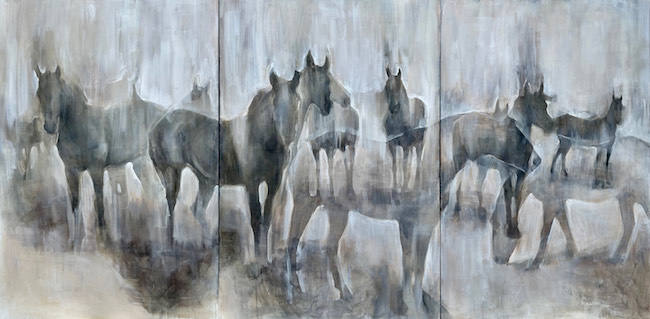
“In portraying horses, I celebrate their beauty while honoring the enduring human-animal bond. Once essential for transportation and labor, our relationship with horses has evolved, becoming a source of fascination and inspiration. They remain both familiar companions and mysterious allies, bridging our connection to the natural world.”
Through her art, Boals invites viewers to explore the rich tapestry of feelings and histories that horses embody. She strives to evoke a sense of wonder that deepens appreciation for these extraordinary beings and the timeless bond we share with them, capturing not just their physical beauty but also the essence of timeless coexistence.


